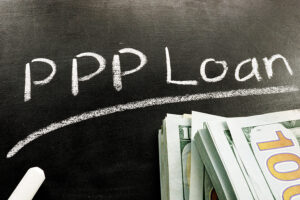Congress Approves New Round of PPP Loans
By Anne ZavagliaPosted on December 30th, 2020

The latest stimulus bill will provide $284 billion in forgivable Paycheck Protection Program (PPP) loans for small businesses. Hard hit businesses can apply for a new PPP loan even if they received one previously. Businesses cannot receive more than two. The deadline to apply for new loans is March 31, 2021 and are a granted on a first come first serve basis.
Eligibility
The new PPP loans have many of the same eligibility requirements as before along with some changes:
- Gross receipts must have declined by 25% in any quarter of 2020 compared to the same quarter in 2019;
- The business must have been operating prior to Feb. 15, 2020;
- Loans cannot be for more than $2 million;
- A business must have used, or will use, all of their previous PPP loan if they received one;
- Have fewer than 300 employees;
- Qualified businesses included corporations, LLCs, sole proprietors, self-employed, and independent contractors.
Loan Terms and Forgiveness
Like first round of PPP loans, businesses can receive a loan for up to their average monthly payroll in 2019 times 2.5. A new provision to this round of loans is that businesses in the hospitality industry can receive a loan for 3.5 times their average monthly payroll.
The loan will be eligible for forgiveness if at least 60% of the proceeds are used for payroll expenses such as wages, salaries, retirement, and group health insurance, over an 8 to 24 week period. Up to 40% may be used for non-payroll expenses including rent, mortgage interest, utilities, and property damage.
Both the loan application and loan forgiveness process will be simplified for businesses with loans for less than $150,000. Furthermore, borrowers are no longer required to deduct the amount of any EIDL advance from their PPP forgiveness amount.
Expenses Paid with PPP Loans are now deductible
The new stimulus bill reverses the ruling by the IRS stating there would be no tax deduction allowed for expenses paid for with proceeds from a forgiven loan. Expenses used for PPP forgiveness are now tax deductible. The new provision applies to both previous PPP loan and any new PPP loans.
Employee Retention Credit
Previously, businesses that received Paycheck Protection Program loans were not eligible to claim the Employee Retention Credit, but now they will be able to. Additionally, the refundable payroll tax credit is capped at 70% of wages up to $10,000 per employee, up from 50%. Qualified wages, which includes employer paid health plan expenses, are wages paid after March 12, 2020 and before July 1, 2021, extended from January 1, 2021.
The bill was signed into law December 27, 2020. The SBA has 10 days after enactment to issue regulations, which suggests businesses will be able to start applying for loans as early as January 6. [1]
Businesses that are considering applying for a PPP loan, whether for the first time or second time, should start preparing now. Find out which lenders will be offering the new PPP loans, and start determining gross receipts by quarter. Businesses, such as sole proprietors, that don’t have business banking account should set one up prior to applying.
Sources:
Jeff Drew, “COVID-19 relief bill addresses key PPP issues,” Journal of Accountancy, journalofaccountancy.com, December 21, 2020, (Source)
“Consolidated Appropriations Act, 2021,” House of Congress, house.gov, December 21, 2020, (Source)
“The Economic Aid to Hard-Hit Small Businesses, Nonprofits, and Venues Act,” SBA.gov, December 29, 2020, (Source)
[1] Gerri Detweiler, “New Paycheck Protection Program (PPP) Loans: How to Qualify and Apply,” Nav, Nav.com, December 29, 2020, (Source)